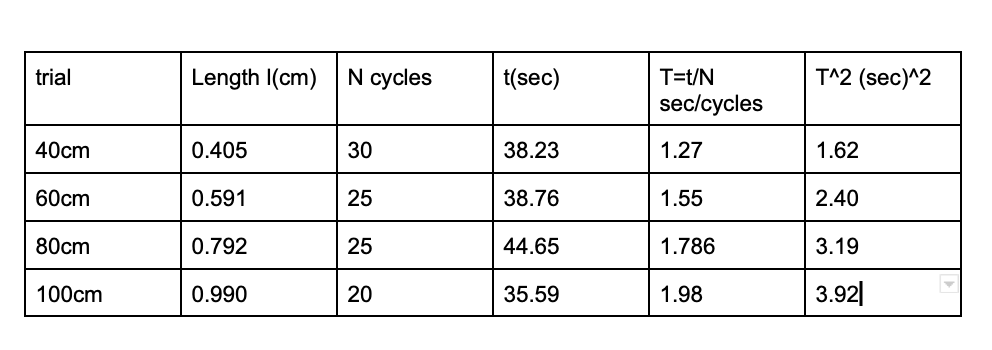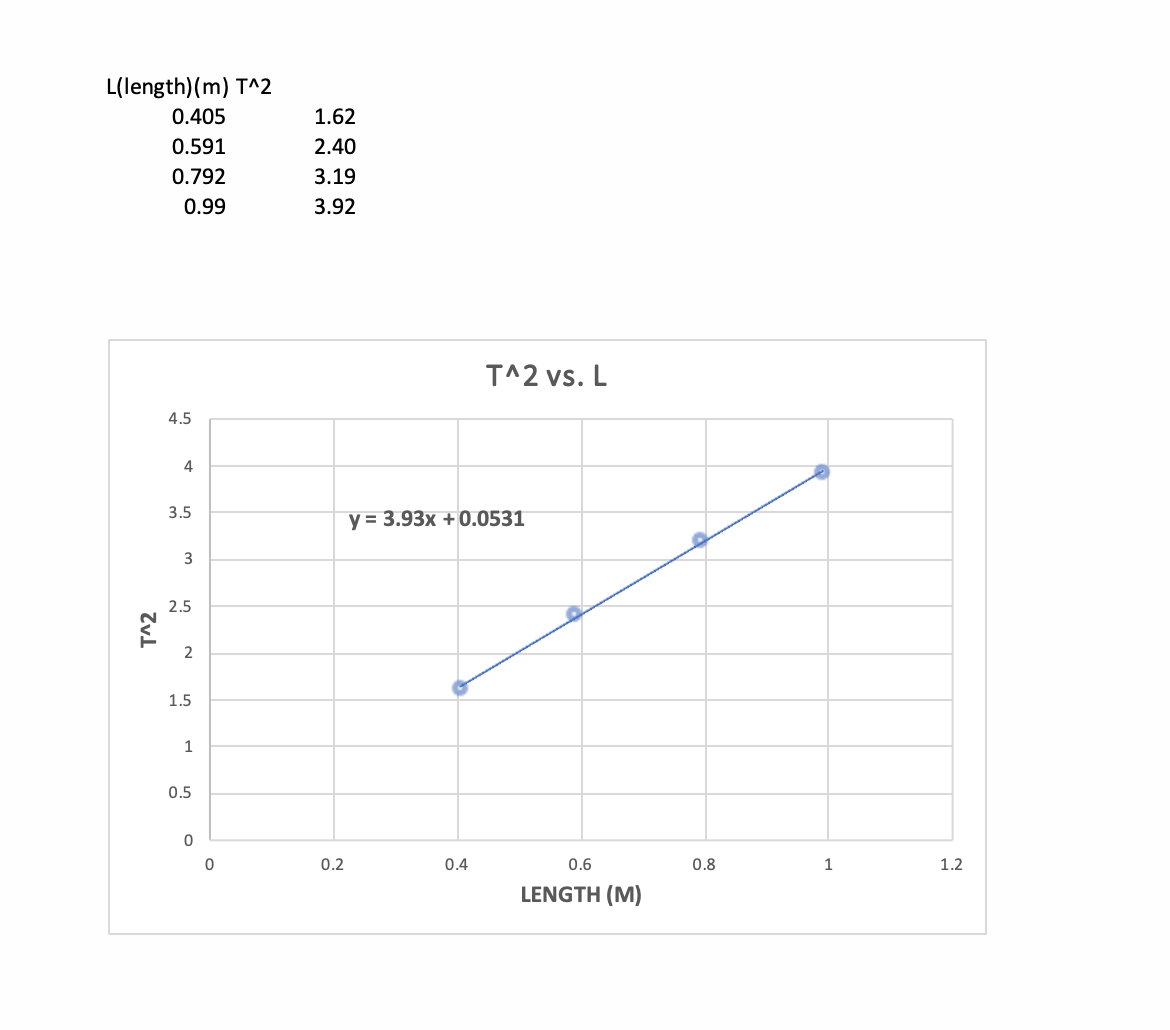harmonic motion: pendulum" experiment, the accepted, experimental and percent discrepancy is given in the attached images. Based on this, what's the conclusion of the experiment? "The purpose of this lab experiment is to prove that the period of the simple pendulum is independent of both the mass of the hanging object and the angle of displacement of the pendulum. The experimental value for acceleration due to gravity using the period of the pendulum is also calculated." Accepted value of g= 9.80m/s^2 Experimental value of g=10.04 m/s^2 Percent discrepancy= 2.39
harmonic motion: pendulum" experiment, the accepted, experimental and percent discrepancy is given in the attached images. Based on this, what's the conclusion of the experiment? "The purpose of this lab experiment is to prove that the period of the simple pendulum is independent of both the mass of the hanging object and the angle of displacement of the pendulum. The experimental value for acceleration due to gravity using the period of the pendulum is also calculated." Accepted value of g= 9.80m/s^2 Experimental value of g=10.04 m/s^2 Percent discrepancy= 2.39
Related questions
Question
For the "harmonic motion: pendulum" experiment, the accepted, experimental and percent discrepancy is given in the attached images. Based on this, what's the conclusion of the experiment?
"The purpose of this lab experiment is to prove that the period of the simple pendulum is independent of both the mass of the hanging object and the angle of displacement of the pendulum. The experimental value for acceleration due to gravity using the period of the pendulum is also calculated."
Accepted value of g= 9.80m/s^2
Experimental value of g=10.04 m/s^2
Percent discrepancy= 2.39%

Transcribed Image Text:trial
40cm
60cm
80cm
100cm
Length (cm) N cycles
0.405
0.591
0.792
0.990
30
25
25
20
t(sec)
38.23
38.76
44.65
35.59
T=t/N
sec/cycles
1.27
1.55
1.786
1.98
T^2 (sec)^2
1.62
2.40
3.19
3.92

Transcribed Image Text:L(length)(m) T^2
0.405
0.591
0.792
0.99
T^2
4.5
4
3.5
3
2.5
2
1.5
1
0.5
0
0
1.62
2.40
3.19
3.92
0.2
T^2 vs. L
y = 3.93x +0.0531
0.4
0.6
LENGTH (M)
0.8
1
1.2
Expert Solution
This question has been solved!
Explore an expertly crafted, step-by-step solution for a thorough understanding of key concepts.
This is a popular solution!
Trending now
This is a popular solution!
Step by step
Solved in 3 steps
